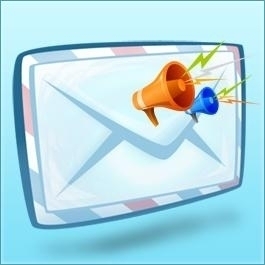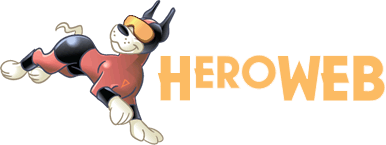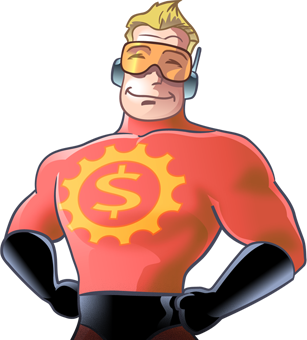Create a Compelling Email Blast

By: Jessica Chestnut
Email has changed the way we communicate. Whereas the majority of business was conducted by phone, mail, and fax, email now dominates, as itís accessible on our computers, tablets and phones. Itís estimated that two out of three people in the US will be email users this year, and that number is set to climb. As a result, marketing with email blasts can be a great way to reach your customers, and potentially gain new ones.
You can create your own blasts or sign up for service through a third-party company such as Constant Contact, Vertical Response or MailChimp. These companies will store your email contacts and track the results of blasts once theyíve sent. Theyíre great for beginners (with templates to help you easily design a blast) or more advanced users who can plug in code for a truly customized design.
With all of the junk emails that flood in-boxes (and the fact that many people are juggling lots of emails in multiple accounts) your email blast has to stand out to be effective. What does it take to create an email blast that your customers will read?
-
Have a clear purpose: Why are you sending an email blast, and what do you want the recipients to do as a result of reading it? Know your audience and objective before sending. With so many emails flooding in-boxes (either personal or business), your blast needs to have a solid purpose so itís not regarded as useless.
-
Target your audience: Segment your lists of email contacts so you can send more focused blasts. For example, if you sell sports equipment and youíre having a sale on tennis gear, youíll want to send a blast aimed only at those customers you know have purchased and/or have interest in tennis gear. Targeting = relevance. In this case, a targeted sale may not be relevant to lacrosse, hockey or basketball customers. Also, segmented lists can save you time. By creating just one general email blast and making minor changes in the messaging relevant to the specific recipients (one blast with wording for the tennis customers, one for the basketball customers, etc.), you can reach more of your audience in a fraction of the time.
-
Get your readerís attention: Ensure that your email blast stands out from all the "noise" (spam) that people receive. Include your company logo and a familiar subject line (with the newsletter name or company name) every time you send it. If itís something that goes out on a regular basis (such as a newsletter), be consistent with the timing of the blast so customers have an idea of when to expect it.
-
Avoid the spam folder: Try to avoid words common in spam emails (especially in the subject line). This can include words and phrases such as "urgent matters", "special", "offer", "discount", "free", "win", etc. Avoid writing in all caps or using multiple exclamation points, as these are also red flags.
-
Keep a consistent schedule: Do not bombard customers with an overload of email blasts (one a week is plenty). Smaller announcements can be handled through Twitter or Facebook. However, do keep the blasts coming regularly so you stay on your customersí radar.
-
Avoid sending on Mondays or Fridays: Sending at the start or end of the week is a good way to get bounced emails, or to possibly have it ignored. Mondays are typically busy as everyone is catching up after the weekend, and people are more likely to be out of the office or leaving early on a Friday. Most social media sharing occurs at the start of the workday (9:30am EST), with Wednesday seeing the most sharing. Plan on sending your email blast in the middle of the week to reach more of your audience.
-
Protect your audience: Never share or sell your email lists. Gain the trust of your recipients by including text (in the footer of the blast or somewhere on your signup page as part of the privacy policy) that you will not share personal information with outside sources.
-
Follow the rules: Do not include false or misleading information in your blast. Always include your brick-and-mortar address along with opt out instructions.
-
Include links for further information: If the blast has the potential to be too long, turn it into an article on your site and include a link in the blast. Link any other relevant websites as well if they were mentioned in the blast. Include a link for the call to action if possible as well (e.g., Click here for our holiday specials).
-
Always include images: When it comes to text, less is more. Include a couple of images to break up the text. Adding your company logo as well will help make the blast more identifiable and reinforce your brand.
-
Create a sense of urgency: Want to improve your chances that the recipients will read your blast and click the links? Give them something that they need to act on immediately, such as time sensitive promotions or coupon codes specific to receiving the blast. Providing these incentives in email blasts is a great way to measure ROI on your efforts through tracking the use of specific coupon codes for purchases.
-
Encourage people to sign up: Promote your email blasts through other social media outlets, such as Facebook or Twitter. Include a sign-up link on your website, in the checkout process, in purchase ďThank YouĒ emails, as well as in your own email signature. Keep a sign-up sheet on hand at any events you participate in. Include a message in the footer of the blast itself, asking recipients to forward the blast on to their colleagues.
-
Finish with a call to action: What do you want readers to take away from this blast? Never assume that they will know what to do without telling them. Do they need to call your business, visit your website, or take advantage of a promotion before a certain date? Make the call-to-action easy to implement by clearly providing links, phone numbers, or whatever is needed to accomplish it.

